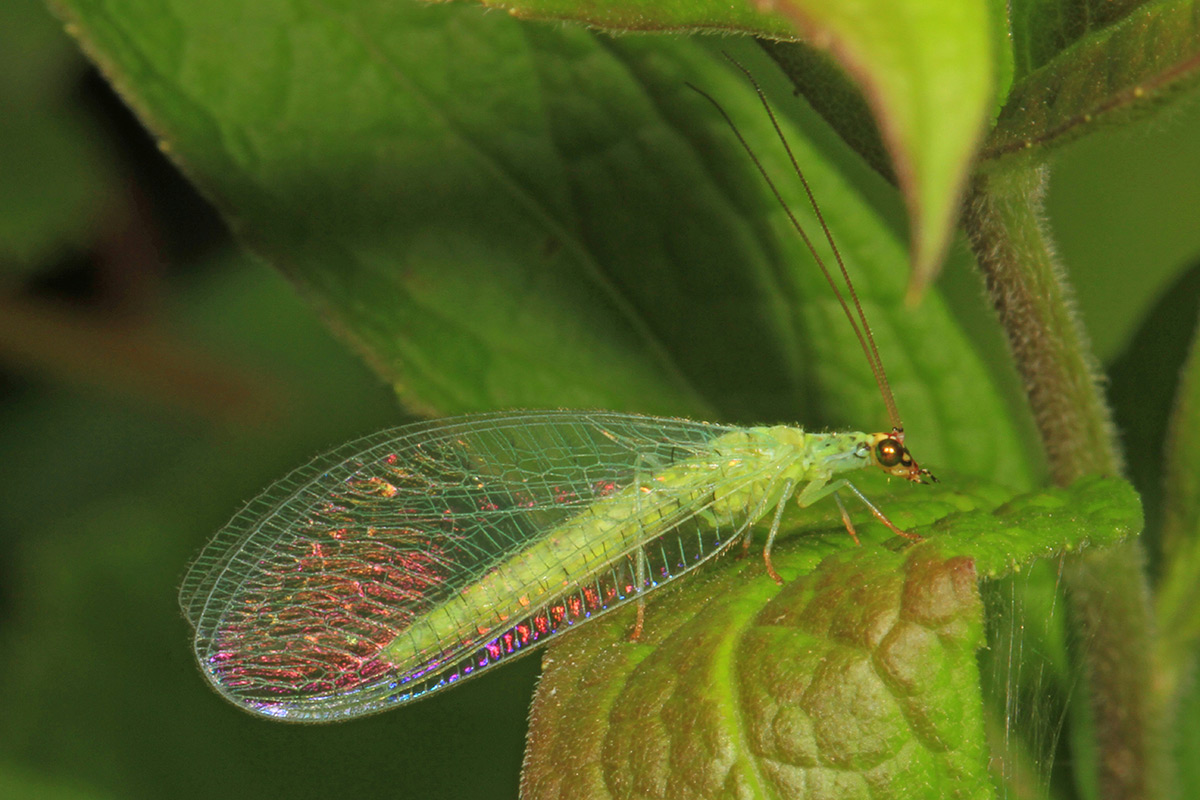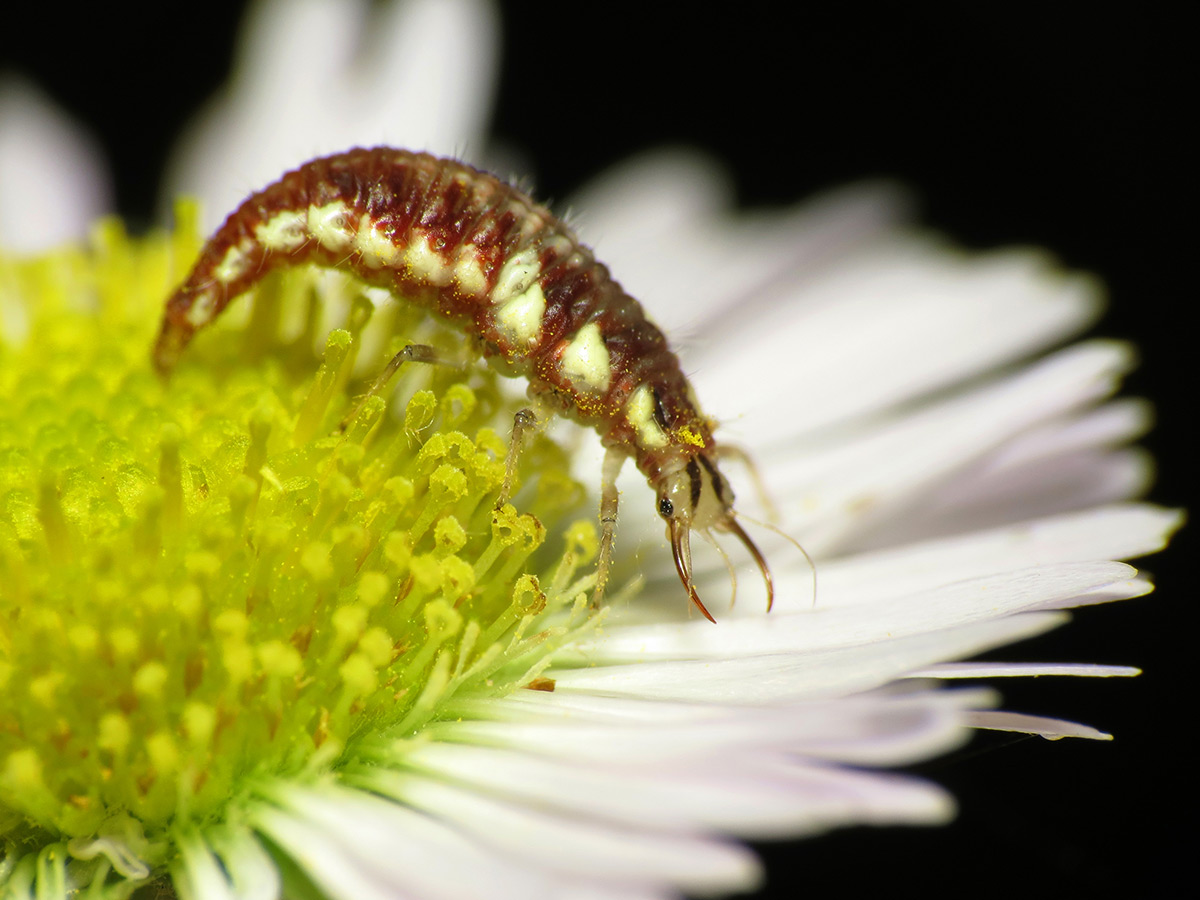With the arrival of spring, you might also be thinking of what plants to add to your garden. Different plants provide food and habitats for different animals, so this choice is a big part of determining which species of wildlife will thrive in your backyard. As much as I enjoy growing flowers for bees and butterflies, this year I’m excited to also support some unsung species that will keep my garden healthy. By planting a diverse range of native plants, I can attract “natural enemies”: animals that love to eat pests!
Meet the predators that keep your garden healthy
There are many different kinds of animals that we call natural enemies, all of which hunt the bugs that might harm your plants. Many might already be familiar faces, such as lady beetles, spiders, lacewings, and dragonflies. These hunters catch their prey by chasing it down or waiting in ambush.

Other natural enemies are parasitoids. Instead of eating something outright, parasitoids lay their eggs in, or on, their prey. After hatching, the larvae then consume and kill the host. Most parasitoids are types of wasps or flies, and while tiny, parasitoids are very important in controlling outbreaks of many different bugs.
How to bring more natural enemies to your garden
One of the best ways to control pests in your yard is by boosting the populations of natural enemies that are already present, and attracting new species. Here are several tips to start using this form of natural pest control:
Plant flowering native plants
To survive in our yards, natural enemies need food, and native plants provide that in multiple ways. Of course, flowering plants attract prey insects that natural enemies eat. But pollen and nectar can also be a helpful supplemental diet for many predators, particularly when prey is rare or not on the menu. Some predatory bugs, and many parasitoids, only eat other bugs as juveniles. Adult parasitoids actually sip on sugary nectar from flowers to fuel up!
Deciding on which seeds and starts to choose can be exciting, but also overwhelming. (At least I know it is for me!) Luckily, many of the same plants that make good pollinator habitat are also used by natural enemies, so multifunctional habitat is easy to create. Check out the Xerces Society’s list of regional native plants that will support a variety of beneficial insects. Your local soil and water conservation district, master gardener chapter, and plant nursery can also be good resources for identifying plants native to your region.

I also have some personal favorites. For my graduate research, I compared native plants for their attractiveness to pollinators and other beneficial insects. Some widely distributed wildflowers that supported the highest numbers of natural enemies include:
- Yarrow (Achillea millefolium)
- Pearly Everlasting (Anaphalis margaritaceae)
- Asters (Symphyotrichum spp.)
- Goldenrod (Solidago canadensis)
- Farewell-to-spring (Clarkia amoena), if you are on the west coast
Use several different families of plants
A diverse garden will create an ecosystem that provides many different types of natural resources. This supports a wider range of beneficial insects, from generalists to specialists. Research has found that landscapes with many different species can help prevent pest outbreaks. Plant diversity also helps ensure flowers are always blooming in your yard, from spring into fall, providing resources for natural enemies all year long.
Include plants of various sizes and shapes
Like other animals, natural enemies do best when they have access to different “microhabitats”. These are small aspects of the environment that each provide different benefits. For example, natural enemies often rely on shady, sheltered foliage to hide during the hot parts of the day, since these protected pockets are cooler and more humid. Perennials are great to include, as they provide long-lasting and dense shelter.
Learn to identify the natural enemies in your yard
Understanding what animals live among your plants is a great step towards protecting your garden ecosystem. Once you start to notice and identify which bugs are natural enemies, you can get a better sense of how strong your pest control crew is. You can use this free guide to common natural enemies, as well as post wildlife photos for identification on iNaturalist.

Something else to remember while you are looking out for bugs: just because an insect is an herbivore doesn’t mean it’s a pest! Usually, whether or not an insect is actually causing harm to your garden is more about how many of them there are. Having some herbivores in your garden is healthy! You need caterpillars munching on leaves in order to have butterflies, after all.
Don’t use pesticides
Pesticides don’t discriminate between the bugs you want to keep and the ones you are worried about. Natural enemies are sensitive to insecticides, and spraying can easily destroy their populations. Using insecticides to solve pest problems right now often results in pest population booms down the road, since no natural enemies are left to keep them in check. You can think of pesticide use as treating the “symptom” (the pest outbreak itself) rather than the underlying cause (for example, over-fertilizing plants which can make them more attractive to aphids).
It is important to note that even organic pesticides can kill or repel natural enemies and other beneficial bugs. You can find more information on how to protect your backyard wildlife from pesticides via our resources.
As you plan your new plantings in your garden this year, I hope you consider including some patches of habitat with natural enemies in mind. This can reduce the threat of pest infestations that could impact your entire yard. Beyond that, you’ll support some really cool groups of invertebrates for their own sake. Happy gardening!




